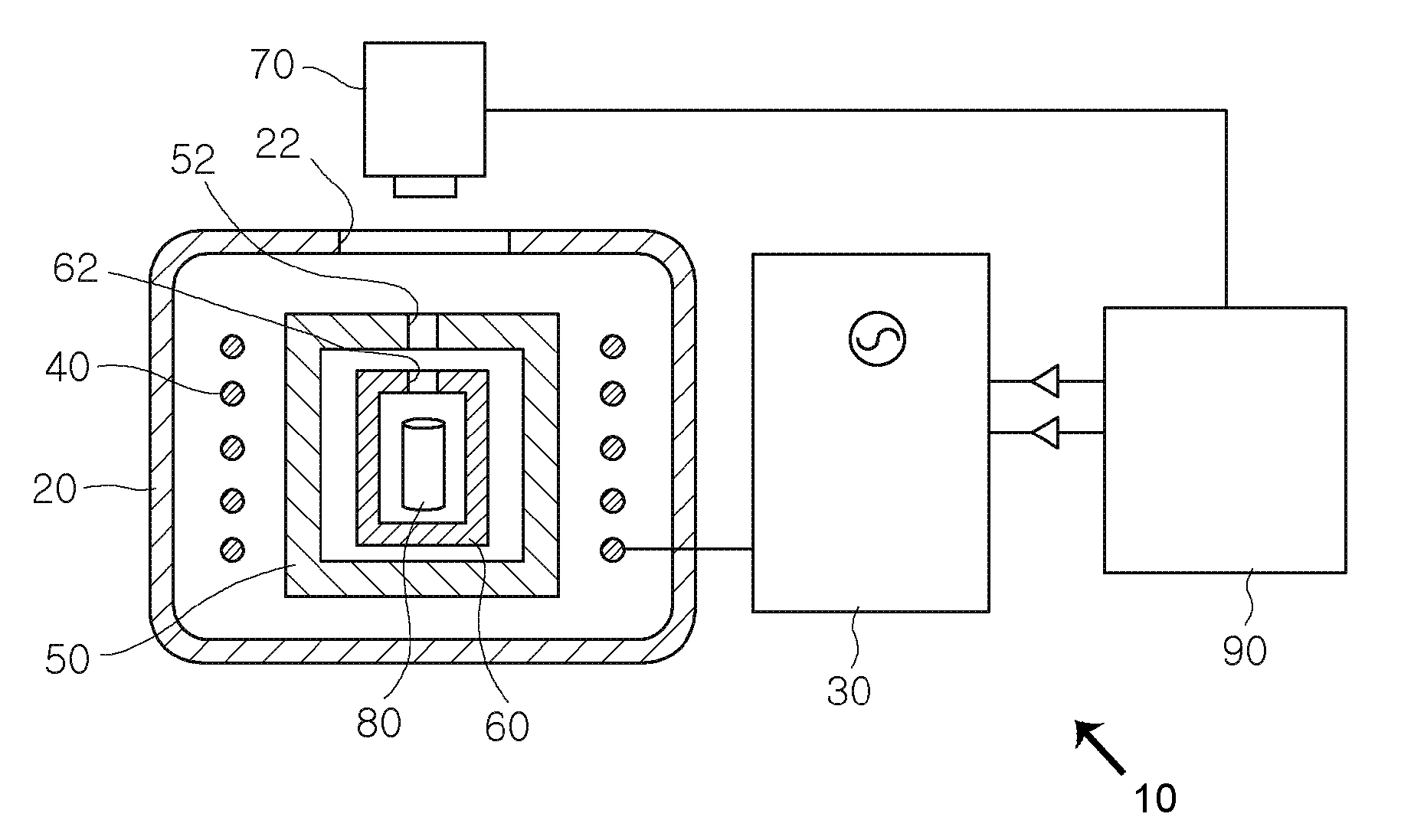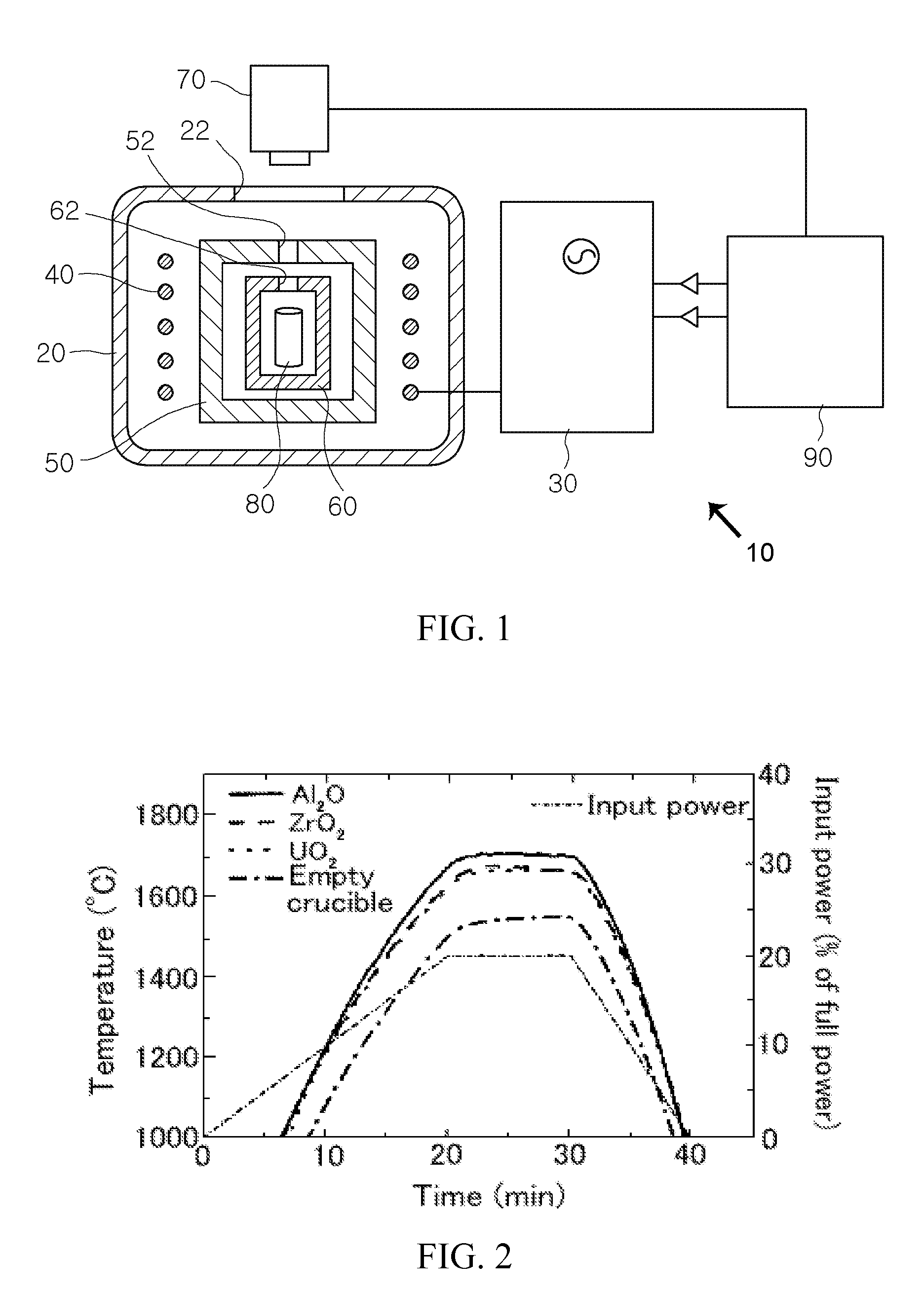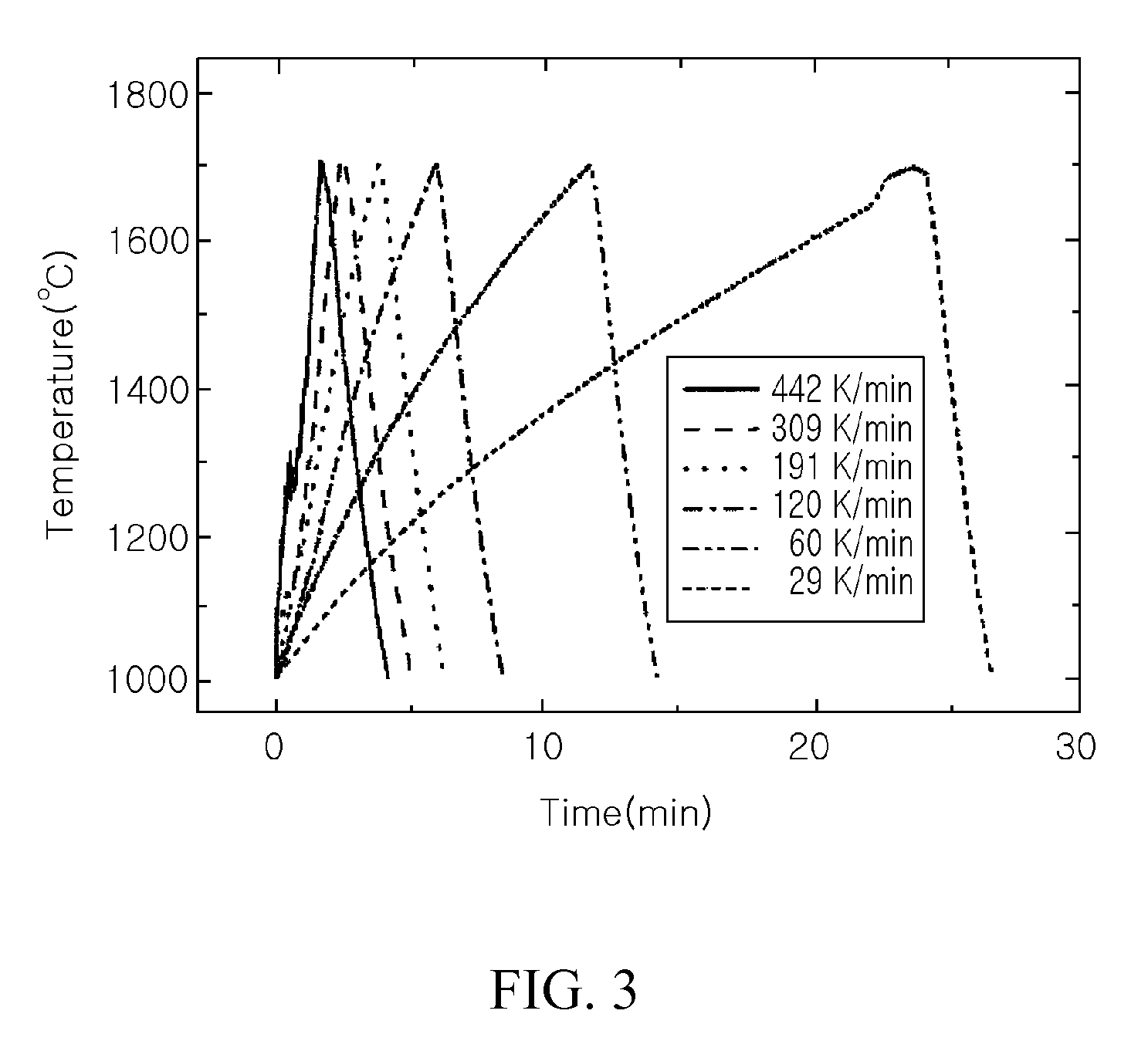High-Frequency Inductive Heating Apparatus and Pressure-Less Sintering Method Using the Same
- Summary
- Abstract
- Description
- Claims
- Application Information
AI Technical Summary
Benefits of technology
Problems solved by technology
Method used
Image
Examples
Embodiment Construction
[0036]The present invention will be more apparent from the following detailed description with accompanying drawings.
[0037]FIG. 1 is a schematic diagram showing the configuration of a high-frequency inductive heating apparatus of ceramic material according to the present invention.
[0038]Referring to FIG. 1, a high-frequency inductive heating apparatus 10 according to the present invention may comprise a preheating housing 50 placed in a chamber 20 to preheat a ceramic material 80, an induction coil 40 that supplies induced current to the preheating house 50 for heating, and a high-frequency current generator 30 that supplies high-frequency current to the induction coil 40.
[0039]The preheating housing 50 in the chamber 20 is installed inside of the induction coil 40, and is heated easily by induced current supplied from the induction coil 40. The induction coil 40 may be installed winding the outer circumference of the preheating housing 50.
[0040]The ceramic material 80 that is put i...
PUM
 Login to View More
Login to View More Abstract
Description
Claims
Application Information
 Login to View More
Login to View More - Generate Ideas
- Intellectual Property
- Life Sciences
- Materials
- Tech Scout
- Unparalleled Data Quality
- Higher Quality Content
- 60% Fewer Hallucinations
Browse by: Latest US Patents, China's latest patents, Technical Efficacy Thesaurus, Application Domain, Technology Topic, Popular Technical Reports.
© 2025 PatSnap. All rights reserved.Legal|Privacy policy|Modern Slavery Act Transparency Statement|Sitemap|About US| Contact US: help@patsnap.com



